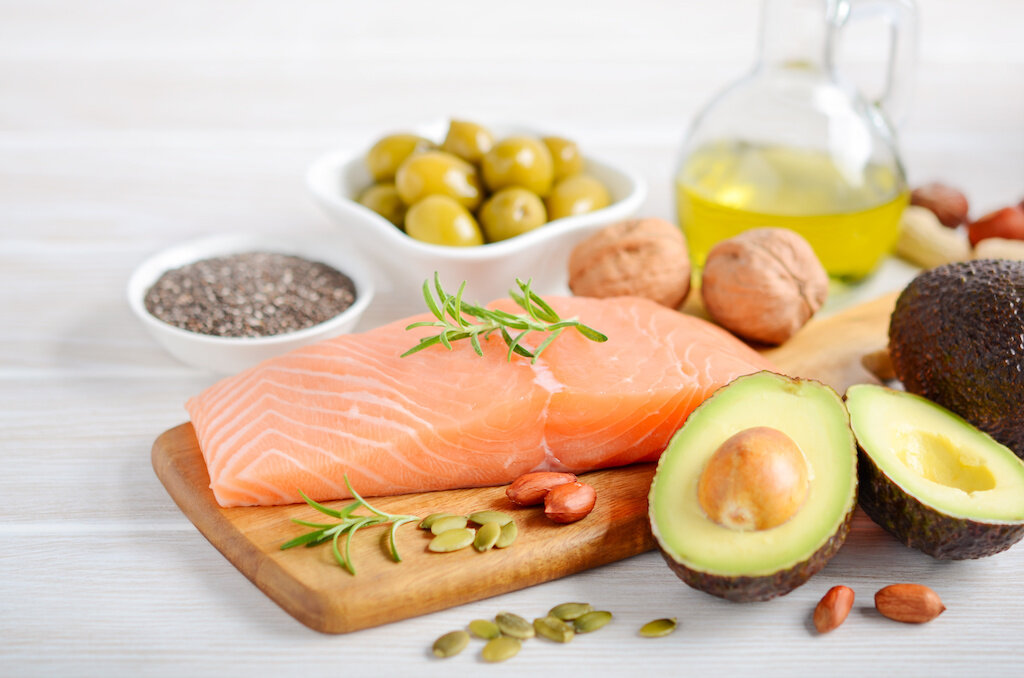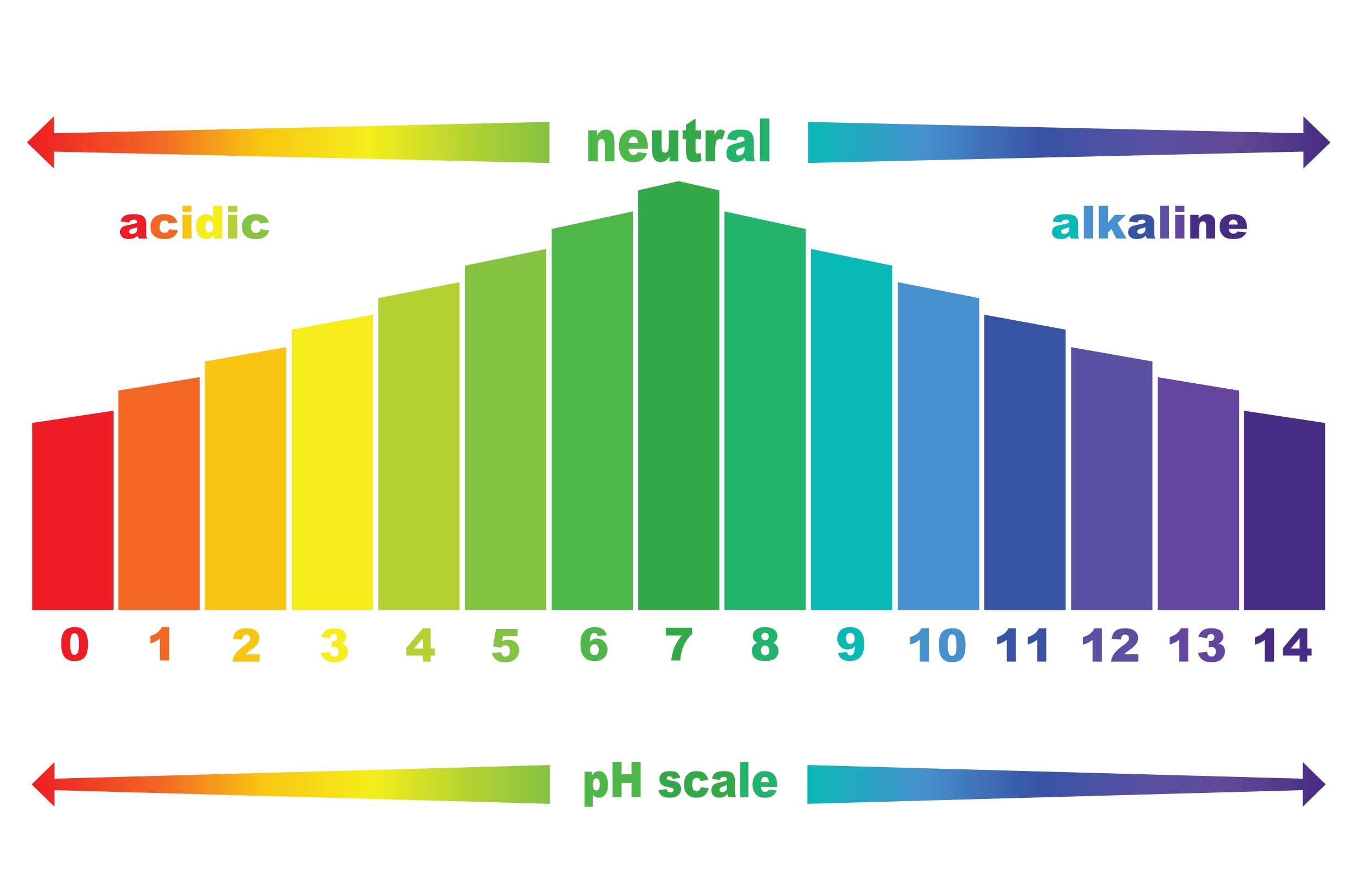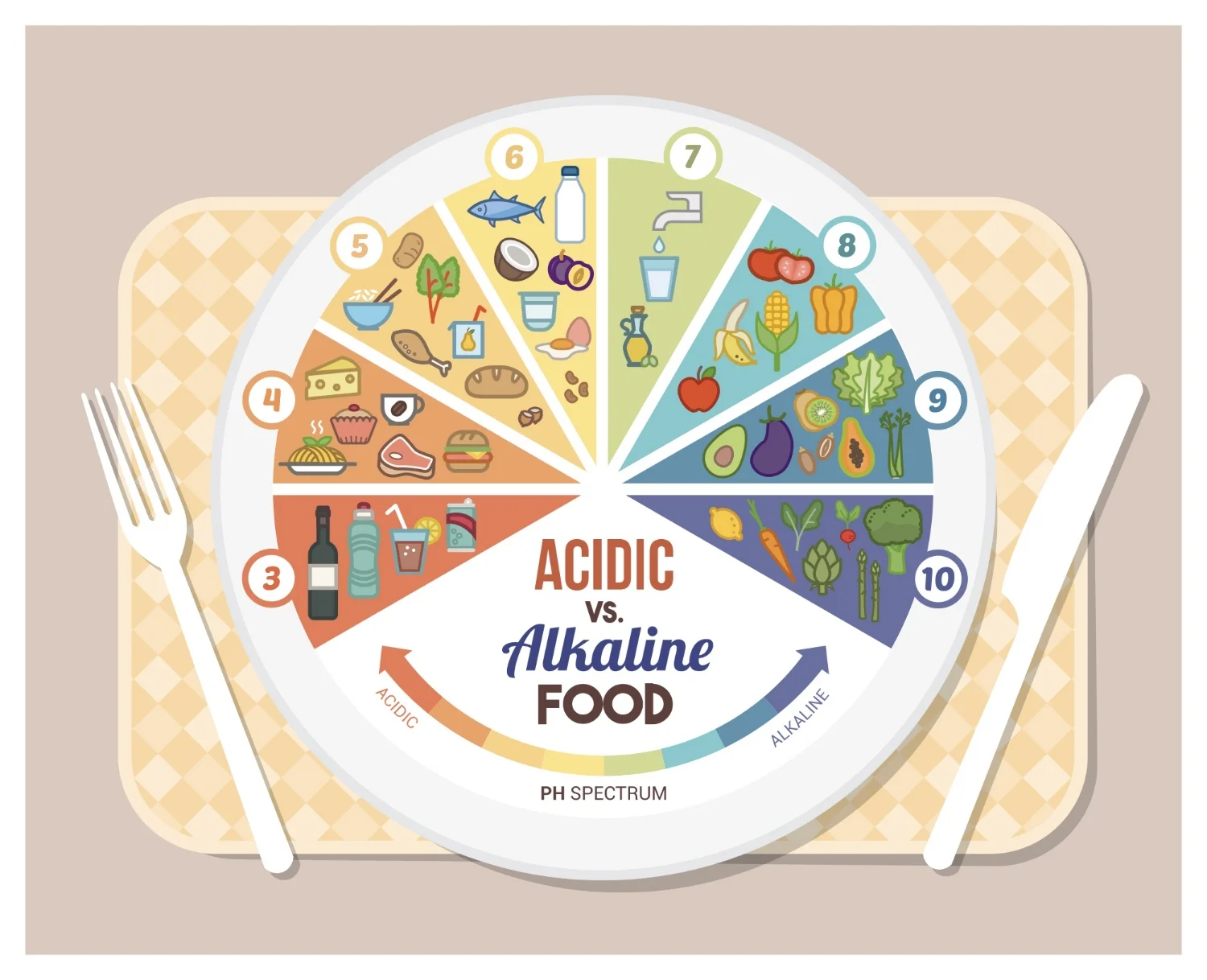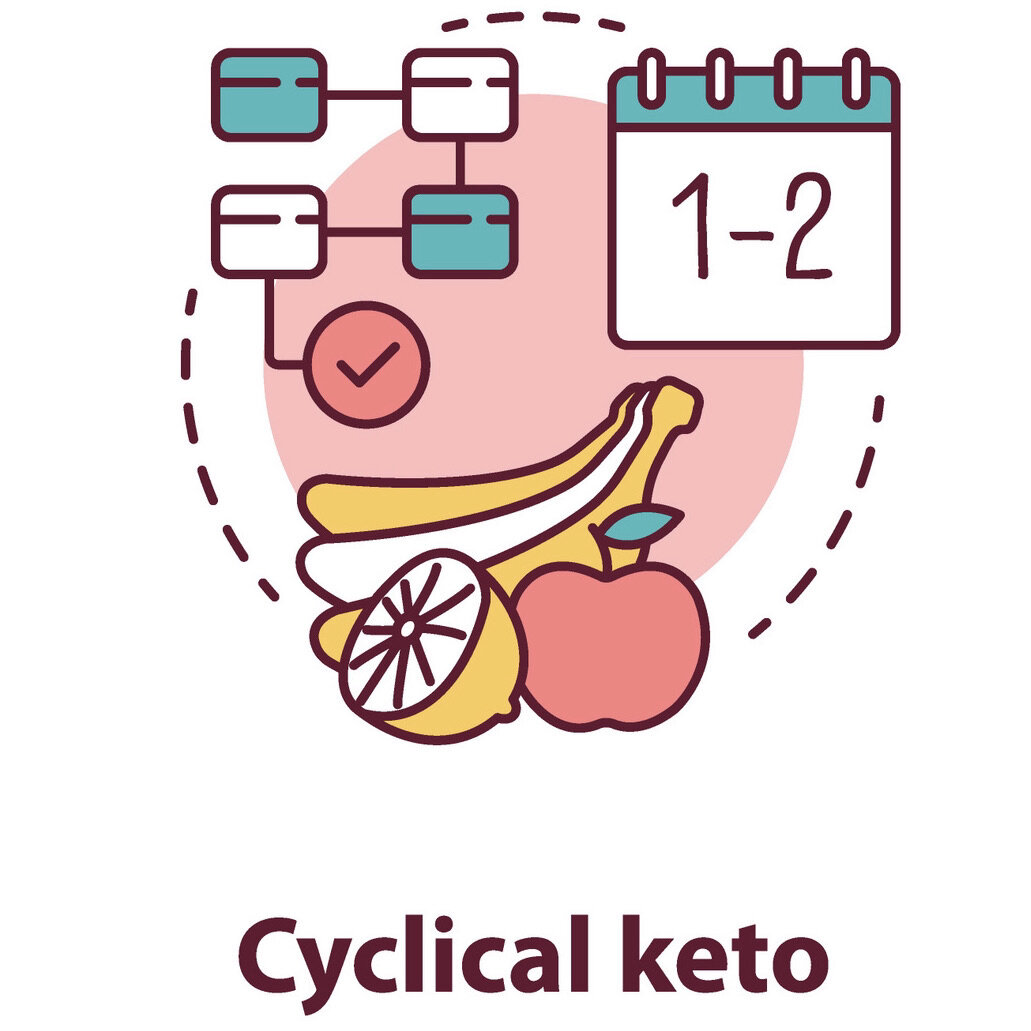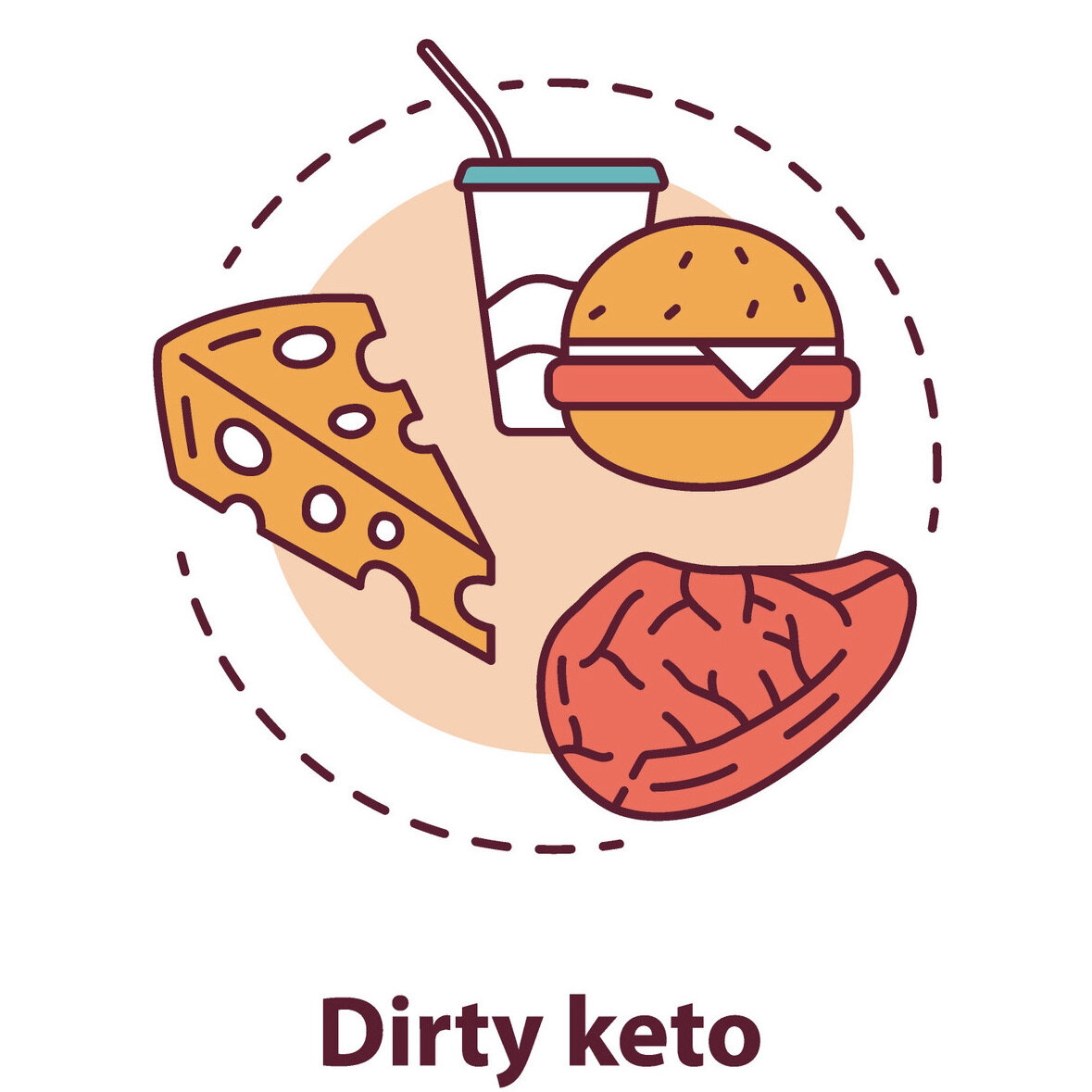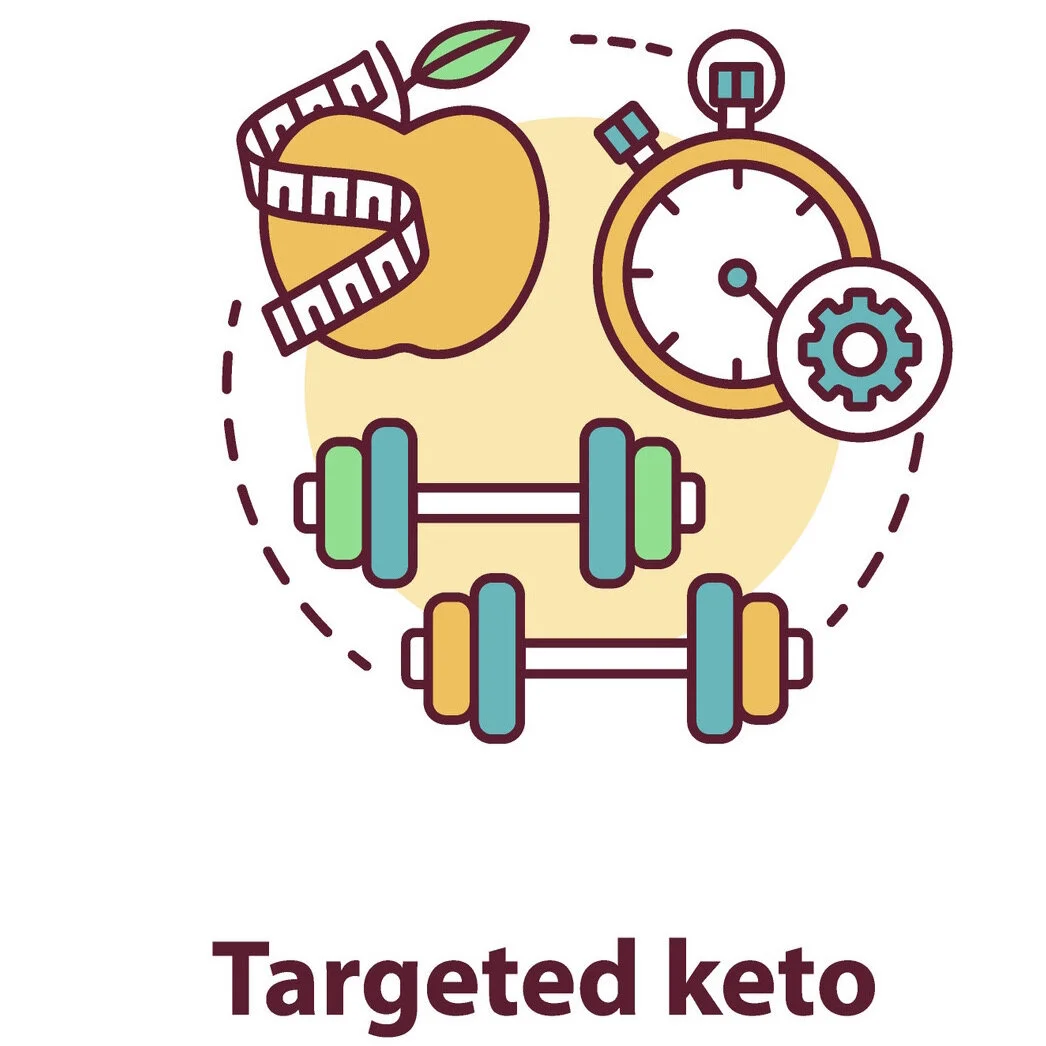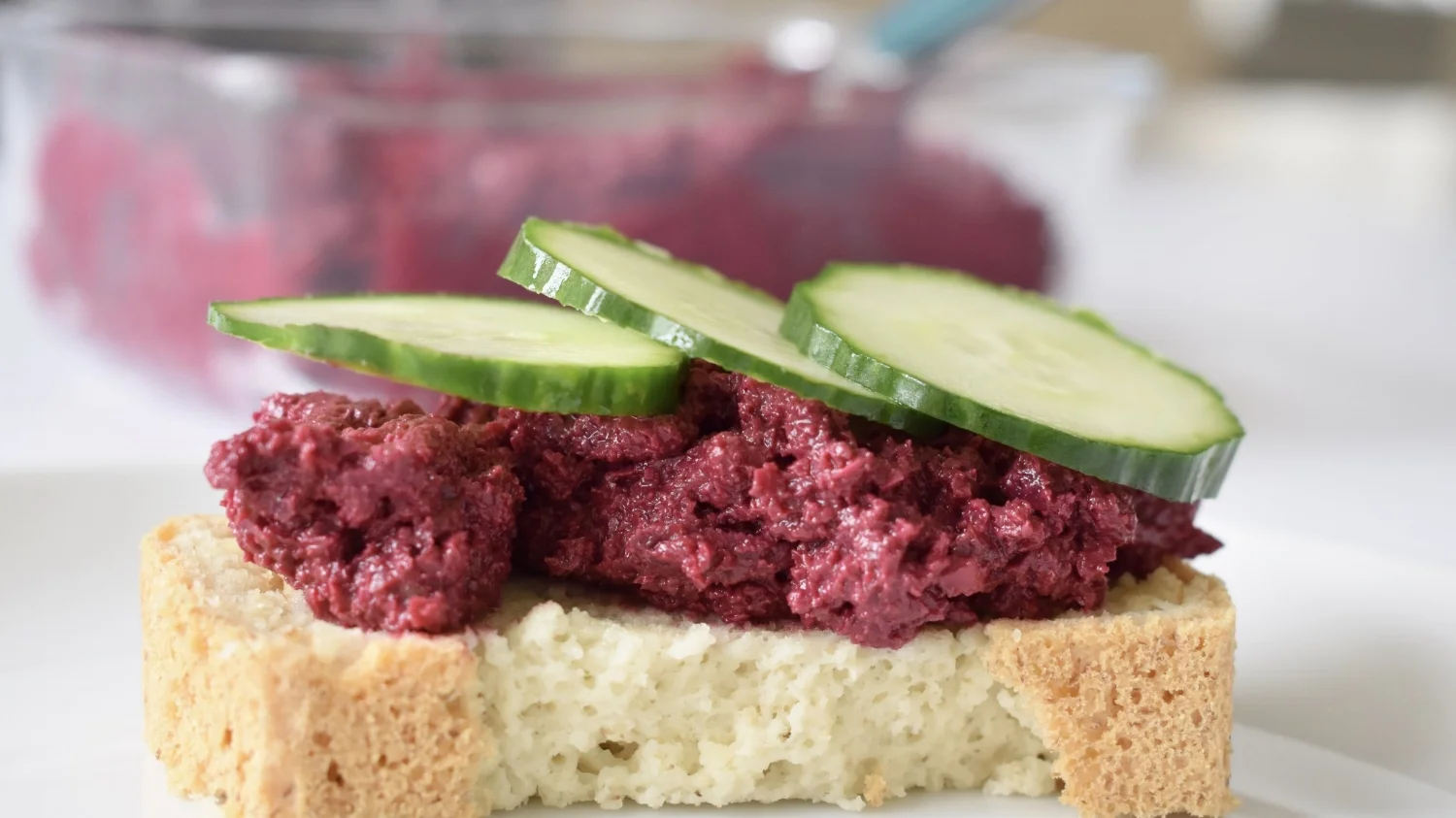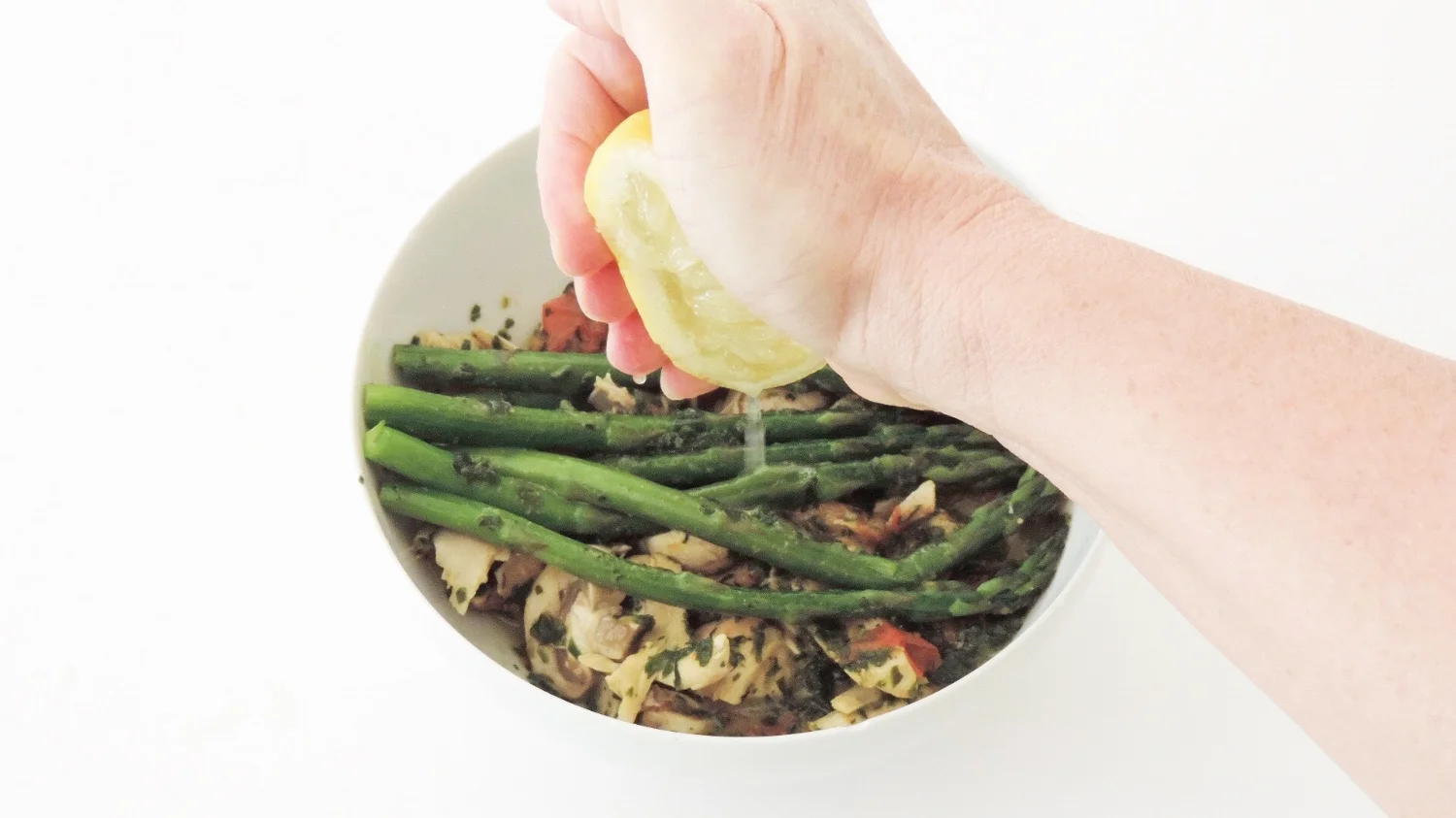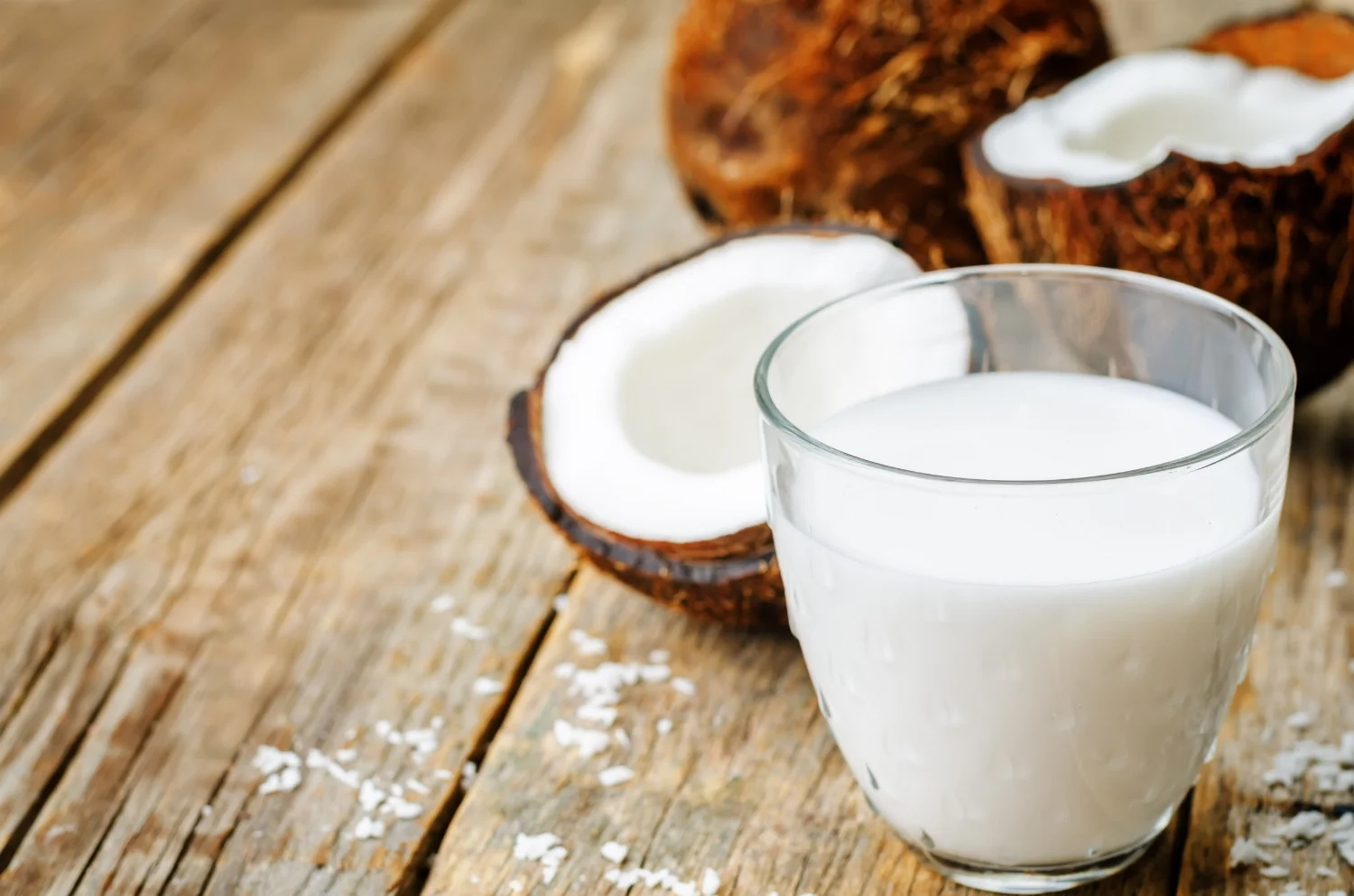The Ketogenic Diet: The Ultimate Keto Guide
I have just caught onto the keto concept and what happens to your body when you deprave it of a significant amount of carbs. So I’ve conduced some extensive research, made a couple of recipes and tried the diet myself.
Surprisingly my payback was increased and prolonged energy leaves; I didn’t fizzle out midday, nor did I experience sugar cravings, my appetite was reduced and I felt a little mentally stronger.
However, its not the type of diet I’d like to sustain for long periods of time, but have to admit it was an efficient way to kick start my body’s fat burning mechanism, so no negative vibes from me.
Don't forget though that the Keto Diet is a DIET and not a lifestyle. At some point, your body will crave more carbs, especially if you work-out a lot So it's essential to listen to your body and not be afraid to eat a bowl of porridge if it comes to that.
You'll find recipes at the end of this post - also on a delicious keto coffee...
Want to board the Keto Train Too?
Thinking of trying a ketogenic diet and want to know what you’d be getting into?
Over recent years, ketogenic diets have become increasingly popular.
The diet is a low carb, moderate protein, and high fat diet, which puts the body into a metabolic state known as ketosis.
The diet is otherwise known as keto (key-toe), low carb diet, and low carb high fat (LCHF).
It has the potential to help people burn off fat stores and lose weight, and research shows that the ketogenic diet helps to fight serious diseases, including cancer and Alzheimer’s.
This guide will give you the pros and cons and show you how to implement the diet in a healthy way, so you achieve the many benefits this lifestyle has to offer.
Also, this post will guide you to what to eat if you're a Keto vegetarian.
Contents:
How it all started
What is Keto
What is Ketosis
keto and The Brain function
Keto for women
How to Get Into Ketosis
ketosis Requires An Adaptation Process
How Will I Know if I’m in Ketosis
13 health Benefits of a Ketogenic Diet
The Keto Side Effects and How to combat them
How do I start My Keto Diet
What Do I Eat on a Keto Diet
The Keto grocery list
Ketogenic Diet for Vegetarians
Ketone level warnings
This post contains affiliate links. You can read about my affiliate policy here.
How it all Started
The ketogenic diet (or keto diet) has been practiced since the 1920s and was first designed as a therapeutic diet to treat epilepsy. Researchers found that fasting for a brief period of time helped reduce the amount of attacks patients suffered, in addition to having other positive effects on body fat, blood sugar, cholesterol and hunger levels.
But long-term fasting is not a feasible option for more than a few days, so the ketogenic diet was developed to mimic the same beneficial effects of fasting. (1,2)
What is Keto
The keto diet “tricks” the body into thinking it is fasting.
On conventional high-carb diets (bread, sugar, cookies, cakes, sweets, potatoes, rice, soft drinks, etc.) your body will produce glucose and insulin (the “fat storage hormone”). Glucose is the easiest molecule for the body to convert and use as energy, so that’s why it's the preferred energy source for your body.
Insulin is produced to process the glucose in your bloodstream by transporting it around your body. Your body can't store too much glucose, so the extra glucose gets converted into fat, which is then stored. And because your body uses glucose as it's main energy source, the glucose that is converted into fat doesn't get used.
When your body runs out of glucose it tells your brain you need more so you end up reaching for a quick snack, and this is how your body becomes a fat storing machine that runs on sugar.
However, when you lower your carb intake, glucose levels, along with blood sugar levels drop, which in turn lowers insulin levels.
By restricting carbohydrates in favor of fat, your body goes looking for other energy sources than glucose - in this case, fat - and begins to burn body fat for energy. Dietary fat is your body’s second preferred source of energy when carbohydrates are not easily accessible.
The liver turns fatty acids into ketones, which can be used to produce energy. This is a good thing, especially if you have fatty liver, Alzheimer’s, dementia, foggy brain and want fat loss!
What is Ketosis
Ketosis is a natural process, and makes perfect sense for the human body.
If we go way back a few thousand years; way before 24 hour supermarkets, restaurants and refrigerators, even before humans figured out farming, our Paleolithic ancestors were hunting and gathering for survival.
They couldn‘t just grab a muffin on the way out the door, or drive thru on the way to work, they had to go get their food, and there wasn‘t always a 100% chance of finding it. This meant there were sometimes long periods of time without eating.
But when they did eat they thrived on a low-carbohydrate diet, which included plenty of animal protein and lots of fat.
Although mortality rates were very high back then, they didn’t die from modern diseases like diabetes, osteoporosis or cancer. They died from injuries, starvation or exposure to the elements.
The fact that humans can go weeks without food, but only a couple of days without water is because of ketosis. Most people, for better or for worse, have enough fat stored on them to fuel their body for a while.
Ketones are produced if you eat very few carbs. When the body produces ketones it's said to be in ketosis. Ketosis happens when the liver breaks down fat into fatty acids and glycerol, through a process called beta-oxidation.
Ketones are the byproducts of the body breaking down fat for energy. There are three primary types of "ketone bodies", which are water-soluble molecules produced in the liver: acetoacetate, beta-hydroxybutyrate and acetone.
Ketones are consumed as fuel in the body and the brain.
You might be thinking why isn't the body constantly breaking down fats in the liver? Well, when your body is producing insulin, the insulin prevents the fat cells from entering the bloodstream so they stay stored in the body.
When you lower your carb intake, glucose levels, along with blood sugar levels, drop which in turn lowers insulin levels.
This allows the fat cells to release the water they are storing (it's why you first see a drop in water weight) and then the fat cells are able to enter the bloodstream and head to the liver.
When your body is producing optimal levels of ketone you begin to notice the many health benefits like weight loss and improved physical and mental performances.
The levels of ketones in the body can be anywhere from zero to very high, and they are measured in millimoles per liter (mmol/L). When ketone levels rise above 0.5 mmol/L, the body will begin to use those ketones for energy.
Keto and the Brain Function
Having the brain get energy from ketones actually improves brain function and is the reason that ketogenic diets are used to treat brain disorders.
The brain can only run on glucose and ketones, and the brain is a hungry organ that consumes lots of energy every day. It needs fast acting energy sources, not a slowly metabolized fuel like fat, but the energy doesn’t need to come from carbohydrates.
Rather, the body is capable of producing glucose from glycerol (from dietary fat or fat tissue in your body), lactate and pyruvate, (produced from glycolysis), and from amino acids (from protein). These substrates go to the liver where it turns them into glucose via the process known as gluconeogenesis.
The rest of the energy that the brain requires is derived from ketones. When the body is keto-adapted, ketones can fuel up to 75% of the brain’s energy requirement.
Ketones are burned using different pathways and enzymes than glucose, causing a cascade of effects that improve brain health.
Some Of The Astonishing Ways That Ketones Contribute To Benefit The Brain:
Ketones are a neuroprotective antioxidant that can protect brain cells.
Ketones are a more efficient energy source than glu and brain cells tend to lose their ability to use glucose efficiently as fuel over time.
Ketones protects the brain from strokes and help prevent neurodegenerative disease like multiple sclerosis, Alzheimer’s disease, amyotrophic lateral sclerosis (ALS), and Parkinson’s disease.
Ketones improve neural communication, memory, learning and thinking.
Although the mechanisms are unclear, ketones have been found to influence neurotransmitters in the brain that help prevent brain cell damage and improve function.
Ketones trigger the function in the brain that support the survival of existing neurons while encouraging the growth and differentiation of new neurons and neuronal connections.
Keto For Women
To date, research studies aimed at investigating keto diets effectiveness and safety have involved only men or animals (mainly mice). Therefore, some are skeptical that the keto diet can work equally well for women. Others question whether it’s necessarily a good idea for women to even try keto given the fact that women’s hormones tend to be more sensitive to most dietary and lifestyle changes. On the other hand there were as many men as there were women among our our Paleolithic ancestors, and they ate the same kind of food.
According to Dr. Anna Cabeca, a double board-certified Ob-Gyn and Regenerative and Anti-Aging Medicine expert, it IS a good idea. She has been using the keto diet to help treat women, especially those in perimenopause or menopause, and she’s hardly ever seen the diet fail to produce benefits. Her clients and patients have experienced weight loss, improved blood sugar control, better quality sleep and reduced menopause symptoms like hot flashes or night sweats.
But she recommend that women follow the principles of an alkaline ketogenic diet as described in the section "Keto Side Effects" below.
Reaching an alkaline pH first before beginning keto can prevent feeling agitated, anxious, uncomfortable or overly hungry (hangry). And it might even help treat perimenopausal or menopausal symptoms like hot flashes or night sweats.
How To Get Into Ketosis
In short you cut consumption of carbohydrate foods way down to about 5 percent of your daily intake. This is all that contains: grains, starchy vegetables (root veggies, rice etc.), fruit, sugar.
But before it gets too technical, let me remind you again, that ketosis is a natural state for the body, and most us might experience it daily without knowing it.
That dog breath you sometimes have when you wake up in the mornings after a long sleep and no food for a long time - that's acetone you’re breathing out because your body is producing ketones. And if you want to sustain that state you can adjust your diet.
The traditional ketogenic diet are 75 percent fat, 20 percent protein, and 5 percent carbs; however, these can be modified based on individual needs and goals (see infographic below).
For the initial adaptation phase, carbohydrate intake needs to be below 50 grams of carbs a day. This is considered a more moderate or flexible approach, but can be less overwhelming to begin with.
This forces your body to look for an alternative energy source: fat (think healthy fats like avocados, coconut oil, salmon, MCT oil etc.).
Once you’re more accustomed to this way of eating, you can choose to lower carbs even more if you’d like, down to about 20 grams of net carbs daily. This is considered the standard, “strict” amount that many keto dieters aim to adhere to for best results, but remember that everyone is a bit different.
For thorough diet details see section "What Do I Eat on a Keto Diet" below.
Ketosis Requires An Adaptation Process
One drawback to ketogenic diets is that they require an adaptation process so that you can readily burn body fat.
If you’ve been eating a high-carb diet, your body won’t have the necessary enzymes to effectively burn fat. In this environment, ketones levels in the blood will be of less than 0.3 mmol/L.
In the initial stages of carbohydrate restriction, the body won’t burn the ketones that are produced by the liver. Instead, they will be excreted in the urine and via respiration (breathing out). During this stage, the body relies on glucose from glycerol and liver glycogen for energy.
Ketones have a fruity odor like acetone, which is one reason that some people associate ketogenic diets with bad breath.
However, the smell is not the same thing as gum disease and it goes away once you are keto-adapted and able to burn ketones for energy.
How Will I Know if I’m in Ketosis
When ketones are at a level between 0.5 and 3 mmol/L, you’re in a range called “nutritional ketosis.” This state is when the body has reached keto-adaptation and will utilize ketones and fatty acids as the primary fuel source.
This state of high ketone levels results in quick and consistent weight loss until you reach a healthy, stable body weight.
Overall, people enter into ketosis at different rates, usually after 3–4 days of fasting or following the very low-carbohydrate diet that forces the need for an alternative energy source. (3)
Optimal ketosis is reached when they body stays in ketosis for at least a few weeks, when any type of side effects diminish greatly while the benefits are more pronounced with the body becoming a fat burner.
Typical signs, which suggest you might be in ketosis:
Rapid weight loss, usually due to a drop in water weight.
Better feelings of satiety and reduced food cravings.
Possible short-term side effects such as bad breath and fatigue.
Testing Ketone Levels
Excess ketones that aren’t used by the body can spill over in a few different ways, showing up the urine, blood, and the breath.
Below are the general ranges, but just keep in mind that test results can vary by the individual.
Negative ketone level: less than 0.5 mmol
Low to moderate ketone level: between 0.5 to 1.5 mmol
High ketone level: 1.6 to 3.0 mmol
Very high ketone level: greater than 3.0 mmol
Urine Testing For Ketones
Method: You pee on a urine strip, which indicates the level of ketones by color. Look for manufacturers that offer strips containing a special chemical for testing ketone levels.
Note: Urine strips aren’t always that reliable for testing ketone levels. This is often because the longer a person is in ketosis, the more efficient the body becomes at using ketones for function, and so it’s possible the test can indicate a lower level of ketosis than you’re actually in. Also, the readings can be affected by other factors, including the level of electrolytes in the body or how hydrated you are.
Blood Testing For Ketones
Method: With a blood glucose meter, you use a lancet pen to press onto your fingertip and draw a small amount of blood. The blood applied on a test strip that monitors ketone levels through the meter.
Note: This is a very accurate method of ketone monitoring, since there are few factors that alter the results. A testing meter kit with 10 strips and a lancing device costs about $60. Extra strips costs about $8 for 100. (2018)
Breath Testing For Ketones
Method: You use a Ketonix breath meter to test the amount of acetone present on your breath.
Note: It’s quite expensive, and not the most reliable testing method, so it’s best used in conjunction with other methods.
Secret Tip:
I’ve been on and off the Keto Diet for years now and my best tip is that doesn’t have to get all that technical. If you just follow the diet guidelines below you'll most probably lose weight and feel the benefits.
13 health Benefits Of A Ketogenic Diet
1. Fat Loss & Increase Fat Burning
Fat loss of all the causes mentioned above, but the Ketogenic diets also blunt hunger, which is one of the hardest things about fat loss. The ketogenic diets are also your go-to method for losing dangerous belly fat, because of how they improve insulin balance and other metabolic hormones.
2. Reduce Insulin Levels & Lower Diabetes Risk.
Ketogenic diets lead to an automatic reduction in insulin as glucose levels go down and the body shifts into fat burning mode.
3. Better Appetite Control
When you eat more fat and cut out most carbs you tend to stop experiencing blood sugar swings. These fluctuations cause intense hunger that keeps you lurching from one carb-heavy meal to the next, never feeling satisfied.
Moreover. Ketones suppress appetite and control hunger and satiety hormones. Scientists have identified that ketones impact cholecystokinin (CCK), a hormone which makes you feel full, and ghrelin, the “hunger hormone.”
4. Lower Blood Pressure
Reducing carbohydrate intake leads to a significant reduction in blood pressure. Combined with the reduction in body fat that coincides with a ketogenic diet, people with hypertension often see blood pressure return to the normal, healthy range.
5. No Calorie Counting
Because ketogenic diets lead to a drop in hunger, calorie counting is not necessary since people will automatically reduce food intake and create a calorie deficit.
6. Lower Triglycerides
Triglyceride levels, which are the amount of fat in the blood, are a main predictor of heart disease. Triglycerides tend to be higher when a greater proportion of calories comes from carbohydrates, especially commercially fructose like refined sugar and high-fructose corn syrup. Counterintuitively, triglycerides go down on low-carb diets as metabolic function is restored.
7. Improved Cholesterol Levels
One reason the mainstream is so down on ketogenic diets is that they are high in fat, often including a decent amount of saturated fat. However, saturated fat doesn’t cause heart disease, and when it is eaten with other healthy fats and plenty of low-carb green vegetables, you can experience an improvement in cholesterol levels. People often see an increase in HDL “good” cholesterol and either no change or a drop in LDL cholesterol from ketogenic diets.
Having said that, it is very un-healthy to eat trans fats such as margarine (learn more about trans fats in section "The Keto grocery list" below).
8. Brain Health
As mentioned above, when the body is keto-adapted, ketones can fuel up to 75% of the brain’s energy requirement. And ketones provide a more efficient source of fuel that confers many astounding benefits.
Ketones are a neuroprotective antioxidant, they boost brain function, and reduce the severity of a brain-related issues. Ketogenic diets are protective against epilepsy and may help reduce the risk of other brain disorders such as Alzheimer’s and Parkinson’s.
9. Acne
One of the more common improvements that people on the keto diet experience is better skin.
10. More energy
In every cell in the body, there are many little "power plants" called mitochondria. Mitochondria are essential parts of cellular metabolism and energy production. They determine how much energy we can produce and at what level we dwell on a daily basis - and these mitochondria work much more efficiently on ketones as fuel than on glucose.
11. Increased Endurance Performance
Energy for exercise. Normally, the body would use the most recently eaten food or any stored glycogen as energy during a workout. So when both of those fuel systems are gone, the body adapts to the ketogenic state of creating energy from protein or fat. This can be helpful for athletes or people who do strenuous workouts and need to continue efficiently burning fat for fuel.
Although a ketogenic may not be appropriate for every endurance athlete, emerging research shows that by adapting the body for fat burning, you can increase your performance at long durations.
12. Reduce menopausal symptoms
One of estrogen’s jobs is to get glucose into your brain for fuel. Estrogen drops during menopause, and so does that ability to get glucose into the brain. A ketogenic diet can eliminate that glucose problem by utilizing ketones as fuel, reducing menopausal symptoms like hot flashes.
13. Anti-Aging
A keto diet steadies insulin levels and improves your lipid profile providing a powerful anti-aging arsenal (5)
But not only that. If we want to live longer, we need to look after our mitochondria, and the keto diet effects on mitochondrial function are quite impressive.
The keto diet has been shown to:
Increase numbers of mitochondria within rat hippocampal neurons
Increase the levels of anti-oxidants within mitochondria.
The Keto Side Effects And How To Combat Them
As the ketogenic diet will change your metabolism, and turn you from a sugar burner to a fat burner, you’re bound to notice some symptoms, because those are significant changes for your body.
The Keto Flu
Many people experience what’s called the “keto flu” as their body gets used to burning ketones for fuel instead of glucose. The most common symptoms are headache and fatigue, but some people also experience nausea, upset stomach, irritability and bad mood and brain fog.
The "keto flu" usually only lasts a few days, but in rare cases it can last up to 2 weeks.
Overall, symptoms usually go away as your body adjusts to being in ketosis.
When you get past the "keto flu" you’ll experience a few weeks of magic - more clarity and energy with less hunger.
However, you're not supposed to feel sick! Headaches, fatigue and irritability are ok, but if you feel really bad, try to eat some extra carbohydrates, like a banana, some nuts, rice or a slice of bread and see if you feel better immediately. If you do, then you may need to reduce your intake of carbohydrates more gradually.
Increased Acidity and Inflammation
The keto diet is likely to make your system more acidic than usual because you are eating more acidic foods like meat and dairy and foregoing the alkalinizing carbs that you need.
In addition, all that fat metabolizing is releasing a flood of free radicals into your cells. As oxidation from free radicals goes up, so does inflammation, and as inflammation goes up detoxification goes down so you aren‘t able to detox as well as usual.
Constipated
The keto diet is rich in fat and low in grains, which easily can lead to bowel problems. However, a diet that contains lots of probiotics and fiber can usually help move things forward. Tip: Dissolve 1 tablespoon of psyllium seeds in a small glass of water for 10 seconds, drink it, and then drink a large glass of water.
Psyllium seeds are extremely rich in fiber - they contain 88 grams of fiber per 100 grams and have a positive impact on the intestinal system. They bind to liquids, so remember to drink plenty (see hydration tip next paragraph).
You can get probiotics through fermented foods or supplements. Here's a keto-friendly fermented salsa recipe.
Dehydration
Carbohydrates help our body to hold more sodium (*eletrolytes) and with it also more water, but when we deplete our body of carbohydrate intake, the water and electrolytes go with it. So when you are following a keto diet or a low carb diet, it’s important to monitor your hydration.
However, staying hydrated involves more than drinking water, because too much water can deplete your body of electrolytes.
Electrolytes are essential to proper hydration. Electrolytes are minerals that carry an electric charge. They’re found in your blood, urine, and sweat and are involved in many essential processes in your body.
What to do:
The key is using sea salt or rock salt, which contains electrolytes your body needs to stay properly hydrated. Sea salt is naturally high in magnesium, potassium, calcium, and sodium. While kosher salt and table salt have zero electrolytes and minerals other than sodium.
Add bone broth to your diet (see tips next paragraph)
SIGNS OF DEHYDRATION:
Dark urine
Headache
Fatigue
Dizziness
Heart Palpitations
Dry skin
*) In nutrition, the term refers to essential minerals found in our blood, sweat and urine. When these minerals dissolve in a fluid, they form electrolytes — positive or negative ions used in metabolic processes. Electrolytes found in your body include: sodium, potassium, chloride, calcium, magnesium, phosphate, bicarbonate
Hunger
If you've been on the keto diet for a while, and it's been fine, then suddenly experience severe hunger, especially if you exercise frequently. Then your body is probably telling you to eat some proper carbs. Listen to that and go make that pot of porridge. As I mentioned in the introduction, the keto diet is a DIET not a lifestyle. Once you've reached your goal weight, you should start eating healthy carbs again (beans, porridge, lentils, fruits). You can always jump back on the keto wagon for a while if some holiday weight should sneak back on.
How To Combat Some of the Side Effects
Following the principles of the alkaline diet can help combat the side effects. Plus, eating an alkaline-rich diet can have profound health boosting effects, like:
Less joint pain, menstrual discomfort, and inflammation.
Reduced risk for osteoporosis and improved bone mineral density.
Increased lean muscle mass.
Optimized magnesium levels.
Reduced risk for cardiovascular disease, cancer, and other chronic diseases.
A healthier immune system.
Follow These 8 Principles Of The Alkaline Diet:
When experts talk about maintaining optimal pH, they’re referring to urinary. Eating an alkaline diet helps create a more alkaline urine pH.
You can test your pH by purchasing strips at your local health foods store or pharmacy. You can measure your pH with saliva or urine. Your second urination of the morning will give you the best results. You compare the colors on your test strip to a chart that comes with your test strip kit.
During the day, the best time to test your pH is one hour before a meal and two hours after a meal.
If you test with your saliva, you want to try to stay between 6.8 and 7.2.
An alkaline diet is one that helps balance the pH level of the fluids in your body, including your blood and urine. Your pH is partially determined by the mineral density of the foods you eat.
Add bone broth to your diet. When you follow a keto diet, you will lose a lot of water weight and also flush essential electrolytes out of our system, including magnesium, potassium or sodium. Adding bone broth is a great way to replenish these naturally, in addition to getting other nutrients and amino acids.
Other foods you can eat more of that also help increase electrolyte intake are nuts, avocados, mushrooms, spinach, artichokes, leafy greens and salmon and other fish.Take Apple Cider Vinegar. Taking a teaspoon to a tablespoon of apple cider vinegar before your meals will help digestion and neutralize acid.
Lemon juice. Squeeze some fresh lemon juice into your drinking water og over your food. Helps neutralize acid.
Prefer whole fresh food and avoid eating processed foods.
Salt and Water. Make sure you’re drinking plenty of water and also consuming enough salt.
Ditch the acidic stuff temporarily. Alcohol, coffee, and most dairy are acidic.
Reduce your exercise load temporary.
Consume more fat if you’re hungry.
How Do I Start My Keto Diet
I recommend that you:
1. Start slow and spend a week getting alkaline by removing acidic substances from your diet and ingesting more alkaline substances as well as embracing an alkaline lifestyle by practicing de-stressing techniques such as meditation and getting out in nature.
2. Shift into ketosis by depriving your body of carbohydrates so it learns to stop burning sugar and start burning fat for fuel.
3. Try intermittent fasting to double-down on the fat-burning benefits of the keto diet. Simply put, intermittent fasting is going a period of time without food, but usually less than a day, such as going without breakfast. Keep close tabs on how you’re feeling. Significant hunger pangs, mood swings or fatigue could indicate hormone changes. And avoid fasting if you're stressed. For more details about intermittent fasting.
4. If you’re very active, consider trying carb cycling, which is staggering the amount of carbohydrates you eat, so some days you eat more of them and some days you eat less. A simple way to cycle carbohydrates is to eat low carb for three days followed by two higher carb days.
Or eat a modified keto diet that does not severely restrict carb intake. Reason being: post-workout you have what’s known as an “anabolic window.” Carbs help restore your energy and provide muscles with glucose for rebuilding, or glycogen to be stored for future energy. Consuming at least some healthy carbs can keep you feeling energized and strong if you’re prone to fatigue and weakness when eating low carb.
What Do I Eat an a Keto Diet
Let’s recall that for the classical ketogenic diet our food intake will be:
70-80% of calories from fats
20-25% of calories from protein
5-10% of calories from net carbs (net carbs are the grams of carbohydrates in a food minus the grams of fiber in it)
With this distribution, a person eating 2,500 calories per day will eat:
208 grams of fat
125 grams of protein
30 grams of net carbs
Carbohydrate Intake
For most people, a range of 20-50 grams of NET carbohydrate intake per day is ideal for the keto diet. Some people can go as high as 80 grams per day to stay in ketosis, but the majority should stay in the 20-50g range for best results. Each person’s metabolism is different.
20-50 grams might not sound a lot, but most vegetables contain only very few carbs and are very rich in fibers. So if you stick to the list of vegetables that I've put in the section "Ketogenic Diet for Vegetarians" below, you can eat about 500 grams of vegetables a day (that'll give your 15½ grams of carbohydrates).
The Net Carb Formula
Net carbs are the carbohydrates that our bodies can digest and turn into sugar, where total carbs include sugar, fiber or indigestible starch.
Fiber does not increase your blood sugar levels. It’s a type of carbohydrate that your body cannot digest, therefore you can subtract the fiber from the total carbohydrate.
To calculate net carbs, you would subtract Fiber from the Total Carbohydrates on the nutrition label.
Net Carbs = Total Carbohydrates – Dietary Fiber
For example: An avocado (201 grams in weight) has 17 g of total carbs and 13 g of dietary fiber therefore net carbohydrate is 4 grams.
If total carbs minus fiber is less than zero (a “negative net carb”) then this means the fiber amount has already been subtracted from total carb, so what you see as the carb amount on the label is also your net carb. See image 3 below as an example of “negative net carb”.
I use the app "Carb Manager" to calculate net carbohydrates. It's free and can be downloaded in iTunes and Google Play.
Protein Intake
Protein should be kept to adequate proportions. Eating too much protein is undesirable because our bodies have a metabolic process named gluconeogenesis, which converts excess protein into glycogen and keeps you in glucose burning-mode and not in ketosis.
To prevent gluconeogenesis, avoid eating more than 1.5 to 2g of protein per kg of lean body mass (0.68 – 1g of protein per lb. of lean body mass LBM). LBM equals body weight minus body fat.
The following formula may be used to estimate LBM:
For men: LBM = (0.32810 × W) + (0.33929 × H) − 29.5336
For women: LBM = (0.29569 × W) + (0.41813 × H) − 43.2933
where W is body weight in kilograms and H is body height in centimeters.
Fat Intake
70-80% of your calories must come from fats.
Since fat is the main source of nutrition on a ketogenic diet, it’s important to source high quality, healthy fats. See examples in next section and in the vegetarian section below.
The Keto Grocery List
As the saying goes, “failing to prepare is preparing to fail.” The way to set ourselves up for success is to source great foods to nourish our body and get into ketosis. This means our grocery list and pantries will look quite different. Common foods on the ketogenic diet include:
Meats:
Fatty cuts of grass-fed beef, chicken and other poultry, pork, lamb, goat, turkey and veal.
Eggs:
Preferably organic or free-range.
Seafood:
Prefer fresh or frozen fish sources like salmon, sardines, catfish, tuna, and trout.
Dairy:
Note that most dairy produces are hard to digest and may trigger inflammation. The only dairy products I eat myself and can recommend are butter from grass fed cows, ghee and produce from goats and sheep.
Prefer organic and full fat produce from goat, sheep or cow, like full-fat cheeses, sour cream, full-fat (unsweetened) yogurt, mayonnaise and heavy creams.
Low-Carb Vegetables and Fruits:
Spinach, kale, broccoli, cauliflower, asparagus and other leafy greens. Small quantities of blueberries, strawberries, raspberries, and avocados.
For more ideas see the next section about keto for vegetarians.
Nuts and Seeds:
Pecans, brazil nuts, macadamia nuts, walnuts, coconuts, hazelnuts, pine nuts, almonds, peanuts, chia seeds, flaxseeds.
You'll find a list of the net carbs in each nut in the section for vegetarians below.
Psyllium Husk is also worth considering. Psyllium is very high in viscous soluble fiber. Specifically, it contains 70% soluble and 30% insoluble fiber. Viscous soluble fiber means that the psyllium husk attracts a lot of water to itself and forms a slippery gel as soon as it’s exposed to water – say, for example, in your digestive system.
Psyllium husk is especially useful in gluten-free baking that requires the structure that gluten provides. Soak it in water for a few minutes and use it in pancakes and bread.
Drinks / Liquids:
Nut milks like coconut milk, cashew milk & almond milk (but check carb counts), coffee (w/heavy cream or coconut milk), unsweetened tea, protein shakes, bone broth, water.
Sweeteners:
Monk fruit, erythritol natural sweetener, xylitol, pure stevia.
Spices and Condiments:
Prefer natural or organic spices! Apple cider vinegar, capers, chili powder, cinnamon, cream of tartar, cumin, dill, horseradish, oregano, paprika, parsley, pumpkin spice, salt, turmeric, pepper (does have carbs), soy sauce, mustard.
Fermented Food:
Make sure you get your probiotics too. Best way is to make your own fermented food with no additives: kimchi, fermented tomato salsa, kombucha and sauerkraut. Or get it from supplements.
Oils and Fats:
Olive oil, avocado oil, MCT oils, MCT oil powder, coconut oil, macadamia nut oil, coconut butter, cocoa butter, flaxseed oil, ghee, grass-fed butter, duck fat, hollandaise sauce, bernaise sauce.
More about Fats:
Fat is the star macro of the ketogenic diet. Dietary fat is satisfying, delicious and helps induce ketosis. But when it comes to fat — quality matters. Good fats that make up a healthy ketogenic diet can be roughly divided into two categories: saturated and unsaturated.
Saturated fats come from animals, like steak, chicken, eggs, or plants like coconuts, palm oil, coconut butter, cocoa butter, MCT oil and MCT oil powder. Note that MCTs are saturated fats that the body quickly breaks down into ketones, meaning they can be used almost immediately for energy. This makes MCTs popular with athletes and for those pursuing fat loss.
Unsaturated fats can be divided into two categories: monounsaturated fatty acids (MUFAs) and polyunsaturated fatty acids (PUFAs). Within these categories, there are certain fats that are healthier than others.
MUFA contain one double bond, which makes them liquid at room temperature. MUFAs make up a big part of the Mediterranean-type diets. You'll find it in olive, avocados, macadamias and brazil nuts.
PUFA. Polyunsaturated means the fat has several double bonds in its chemical structure, meaning it’s more unsaturated than MUFAs. PUFA contain essential omega-6 and omega-3 fatty acids, which have healthy benefits when consumed in the proper balance of around 2:1. Most people in the Western world are eating a diet that’s more around 30:1, omega-6 to omega-3 — not good! The right balance can reduce the risk of heart disease, stroke and other diseases related to inflammation while also aiding in brain health. You'll find food quality PUFA in: Walnuts, pumpkin seeds, sunflower seeds, flax seeds, chia seeds, avocado oil, flax seed oil, sesame oil, fish oil and in wild fatty fish like salmon, trout and tuna.
Ground flaxseeds and flaxseed oil, walnuts, chia seeds, fish and fish oil contain omega-3s. So, focus on consuming these most often and use the others in moderation to keep that 1:1 omega ratio healthy.
Fats You Should Avoid Like the Plague: The fats below aren’t just “no-nos” for a ketogenic diet — they should be avoided by everyone due to the harmful effect they have on your health.
Hydrogenated oils also known as trans fats, were created in the early 1900s as a way to make unsaturated fats shelf-stable and solid at room temperature. Trans fats are very damaging to health because they promote inflammation and increase the risk of diseases such as heart disease and cancer. Trans fats also reduce good (HDL) cholesterol while increasing bad (LDL) cholesterol.Trans fats are: hydrogenated oils, margarines, non-dairy coffee creamers, shelf stable frostings, microwave popcorn, deep fried food, etc.
Vegetable fats and oils like minarine, grape seed oil, sunflower oil, corn oil, canola oil and the likes, are oxidized fats that cause inflammation and mutation in cells, and they are all very high in omega 6.
So my best advice is to check your cupboards for these oils, throw them in the bin and replace them with cold-pressed unrefined olive oil, avocado oil, ghee, coconut oil, or butter from grass fed animals etc.
refer good old classic oils that you could make yourself if you should get the urge.
Ketogenic Diet for Vegetarians
A ketogenic diet for vegetarians is reasonable, but takes a little extra thought. The biggest component of the ketogenic diet is fat, which you can easily get from vegetarian foods.
For omnivores going keto, the most common mistake is eating too much protein.
However, the biggest mistake vegetarians make is eating too many carbs from vegetables. You do have to be a little more careful with your carb and protein choices since traditional vegetarian forms of protein include things like beans and grains, which aren’t a part of a keto diet.
Carbohydrates for a Vegetarian Ketogenic Diet
Bad carbs. A lot of the go-to meals and especially snacks common for vegetarians and vegans are pretty carb-heavy. But excessive carbohydrates (even from veggies) aren’t part of a keto diet. Of course, refined carbs like sugar, flour, bread, cereal, chips, etc. are immediately off the table.
Good carbs on a vegetarian keto diet are basically the same as those on a normal keto diet, such as low-carb fruits, full-fat yogurts, and low-carb veggies (more on this below).
Low-carb Vegetables. You’ll need healthy low-carb veggies to provide enough bulk and fiber to fill in your meals and get enough to eat.
Eat them raw or try cook them in some coconut oil or butter with lots of seasonings.
If you stick to the vegetables listed below, you can eat approx. 500 g of vegetables a day, which'll give you 15½ g of carbs.
Vegetables with less than 5 g net carbohydrate / 100 g:
Asparagus, green 4 g (net 2.0 g)
Broccoli 6.5 g (net 3.9 g)
Cabbage 7.0 g (net 4.7 g)
Cauliflower 5.0 g (net 3.0 g)
Celery 5.2 g (net 3.6 g)
China radish 4.1 g (net 3.5 g)
Cucumber 2.1 g (net 1.6 g)
Eggplant 5.0 g (net 2.0 g)
Fennel 7.0 g (net 3.9 g)
Green cabbage 10.4 g (net 4.2 g)
Haricot verts 5.7 g (net 2.7 g)
Iceberg salad 3.2 g (net 2.1 g) - all salad types are low
Mushroom 3.3 g (net 2.1 g)
Peppers, green 4.6 g (net 2.8 g)
Peppers, red 6.2 g (net 4.5 g)
Pointed cabbage4.9 g (net 3.0 g)
Pumpkin 5.0 g (net 4.0 g)
Radish 2.5 g (net 1.2 g)
Red cabbage 6.5 g (net 4.5 g)
Spinach 3.4 g (net 1.5 g)
Spring bulbs 7.3 g (net 4.7 g)
Squash 2.7 g (net 1.8 g)
Tomato 5.7 g (net 4.3 g)
Fruits. All types of fruits should be limited, but berries are lower in sugars and carbs, so they’re typically okay in small amounts and at the end of the day before you fast while sleeping:
Blackberries
Strawberries
Raspberries
Blueberries
Spices:
Basil
Cayenne pepper
Chili powder
Cilantro
Cumin
Oregano
Parsley
Rosemary
Thyme
Protein on a Vegetarian Ketogenic Diet
Here’s a comprehensive list of protein-containing foods that have the green light on a keto vegetarian diet:
Eggs
Dairy
Tempeh
Natto
Nuts and seeds (see below)
If eating any soy products, try to stick to only those that are non-GMO and fermented (like organic tempeh).
If you find your protein needs still aren’t being met, you could consider using an organic pea, soy, rice or hemp protein powder, but only use it as a supplement—not a regular meal replacement. My favorite brand is Clean Lean Protein, it's clean and very low in carbs.
Be wary of packaged vegan and vegetarian meat substitutes: While these might be good substitutes for meat in terms of fat and protein, they might also contain a high amount of carbs. Be sure to check the carb content per serving, and consider the ingredients. Is it full or preservatives and additives? Better meat substitutes would be any of the proteins mentioned above as well as portobello mushrooms or eggplant.
Fats for Vegetarians in Ketosis
Nuts and Seeds
Nuts and seeds are sources of both protein, fat, fibres and lots of other good stuff. Just be sure to choose mostly low-carb and high-fat choices, as some nuts and seeds are higher in carbs than others and can add up quickly.
Here are the net carb counts in a 1 oz. portion of commonly eaten nuts.
Example: 1 oz is approximately 28 almonds, a small handful or the size of a golfball.
Nut options (lower carb):
Pecans: 1.1 grams
Brazil nuts: 1.3 grams
Macadamia nuts: 1.5 grams
Walnuts: 1.9 grams
Peanuts: 3.8 grams
Pistachios: 5.8 grams
Cashews: 8.4 grams
Chestnuts: 13.6 grams
Best seed options:
Psyllium Husks (great in home baked bread and pancakes)
You can make your own nut milk from the above too.
Healthy Oils and Fats:
The right types of oils are great for a ketogenic diet because they’re entirely made of fat. MCT’s in particular are a type of fat that is metabolized quicker than most and broken down into useable energy. It also can easily cross the blood-brain barrier, which is why they are so beneficial to our mental clarity and performance.
Butter, grass-fed
Hollandaise Sauce
Mayonnaise
Olive Oil
Their Non-Dairy Fat Sources:
Avocados
Coconut cream
Olives
Dairy:
As I mentioned above, for better digestion go for organic and full fat produce from goat, sheep or cow, like full-fat cheeses, sour cream, full-fat (unsweetened) yogurt, mayonnaise and heavy creams.
Butter (grass-fed)
Cottage cheese
Cream cheese
Full-fat unsweetened Greek yogurt or coconut yogurt
Hard cheeses like Parmesan, Swiss, feta, and cheddar (full-fat)
Heavy whipping cream
Mayonnaise
Soft cheese like Brie, Monterrey jack, mozzarella, and bleu cheese (full-fat)
Ketone Level Warnings
It’s important for those with diabetes to be aware of diabetic ketoacidosis (DKA), which turns the blood acidic if ketones reach a very high, dangerous level. This can happen with diabetics who are hurt, sick, or not taking in enough fluids.
It’s important to know that DKA is different from nutritional ketosis, which is safe on a healthy, nutritious ketogenic diet. For most people, there should be no concern about the formation of ketones, as they are either used or eliminated from the body and are part of a healthy weight loss and fat burning process.
Understanding the details about ketones and how they fit within the scope of ketosis and a low-carb diet is key for success in all of these areas combined!
Keto Variations
The Keto Diet is hard. Thankfully, a few keto variations have been developed that are a little more flexible, and easier to stick with long-term. Here are short descriptions of the standard keto plus four variations that are much easier to follow but still have fat-burning benefits.
0. Standard Keto
Macronutrient ratio: 75% fat, 15-20% protein, 5-10% carb
Plan all meals around fat like avocados, butter, ghee, fatty fish and meats, olives and olive oil. Get about 150 grams a day. Slash your carbs to no more than 50 grams per day => sticking to leafy greens, non-starchy veggies, and low-carb fruits like berries and melon. Eat a about 90 grams of protein per day or 30 grams at each meal (like meat, fish, or poultry).
1. Cyclical Keto Diet (CKD)
Macronutrient ratio: 75% fat, 15-20% protein, 5-10% carbs on keto days; 25% fat, 25% protein, and 50% carbs on off days
Cycle in and out of ketosis while enjoying a more balanced diet on your "days off." One approach includes five days of the classic keto diet and two non-keto days per week. For best results, eat wholesome carbohydrate-rich foods on your off days, including fruits, starchy veggies, dairy products, and whole grains (rather than added sugars or highly-processed fare).
2. Dirty Keto
Macronutrient ratio: 75% fat, 15-20% protein, 5-10% carb
Dirty Keto allows processed and fast foods. Go ahead and eat that sausage, egg, and cheese sandwich, minus the bun. While you're at it, wash it down with a sugar-free soda. The dirty keto diet is a version of the high-fat, low-carb keto diet.
Dirty Keto follows the same macronutrient breakdown as regular keto but allows processed and fast foods. A dirty keto diet can lack the nutrients your body needs to survive, and it fills your plate with preservatives that cause inflammation.
3. Targeted Keto Diet
Macronutrient ratio: 65-70% fat, 20% protein, 10-15% carbs
Popular among active individuals who need more carbs. It allows an additional 20-30 grams of carbs immediately before and after workouts to allow for higher-intensity exercise and enhanced recovery. (The total carb count comes to 70-80 grams per day.) The best options include fruit, dairy or grain-based foods, or sports nutrition products.
The targeted keto diet is popular among athletes and active individuals who live a keto lifestyle but need more carbs. It allots an additional 20-30 grams of carbs immediately before and after workouts to allow for higher-intensity exercise and enhanced recovery. (The total carb count comes to 70-80 grams per day.) The best options include fruit, dairy or grain-based foods, or sports nutrition products. Because the additional carbs are readily burned off, they don't get stored as body fat.
4. Moderate keto
Macronutrient ratio: 70% fat, 10-15% protein, 10-20% carb
Eat high fat with approximately 100-150 grams of net carbs daily. People who experience problems with other keto forms sometimes do better with this diet because restricting carbs can sometimes mess with hormonal function and energy levels.
Note To People With Diabetes:
When you eat fewer carbohydrates, it’s normal to need less medicine because the fewer carbs mean a lesser increase in your blood sugar levels. If you don’t adjust your medicine accordingly and continue to take the same quantity of insulin, it may cause a fall in your blood sugar levels (hypoglycaemia). Certain diabetic tablets may also cause a risk of fall in blood sugar. Have your blood sugar tested if you follow a keto or other low carb diets. Adjust your medication doses when needed, and in consultation with your doctor.
Keto Recipes
Disclaimer:
All information in this blog is strictly for informational purposes only and should not be taken as medical advice. The statements made in this blog have not been evaluated by The Danish Health Authority. The products linked to in this blog and any information published in this blog are not intended to diagnose, treat, cure, or prevent any disease. The information provided by this blog is not a substitute for a face to-face consultation with your physician, and should not be construed as medical advice. The entire contents of this blog are based upon the opinions of Hanne Robinson. By reading and using this blog, you agree to only use this publication for personal informational use and not as a substitute for medical or other professional advice.
